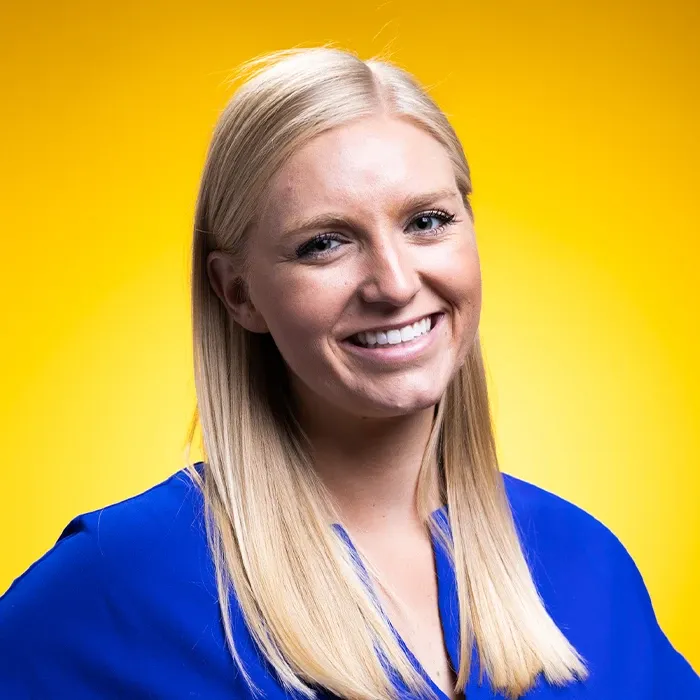Industry Knowledge
The Deal With the Online Dating Industry: A Date with Destiny
Online dating is rapidly growing into a competitive billion-dollar industry. To thrive in the industry, creating a safe and secure platform for users will be crucial.
When fate aligns, two strangers can possibly be “the one” for each other on the internet. They start chatting, meet in person, and, if things work out, become a couple. Some even end up getting married! But how often do these online encounters really pull through? Quite a lot, according to the statistics. A Stanford University study showed that from 1995 to 2017, the number of heterosexuals who met their partner online increased from 2% to a whopping 39%.1
I am here to vouch as a personal success story. A few of weeks ago my boyfriend of 3 years proposed, and we plan to get married in 2023. We met on Hinge after I spent a few years on and off “the apps”. Although swiping is not always the best experience, I am here to tell you, there is hope! I found the love of my life, and I could not be happier (DM me for the full story, I will gladly tell it for the 100th time. Still living on cloud nine!). One of the best things about dating apps is that it’s so easy to weed out all of the bad and focus on what you are looking for. We get to use technology to our advantage to find what we are looking for in our partner, so I think at the end of the day, our generation has some advantages. Hinge’s “designed to be deleted” campaign worked for me, but that didn’t go without some ROUGH dates before finding the one.
There’s no denying that online dating industry has gone mainstream—particularly among the younger generations. According to market research company YouGov, statistics show that 32% of Americans have used a dating app at least once, with Gen Xers at 39% and Millennials at 44%.2 Match Group’s earnings presentation revealed that this is true for almost half (47%) of 18-24-year-old single adults.3

(Not Always) a Match Made in Heaven
Despite its popularity, however, not everyone thinks the online dating industry trend is great. Some still see dating apps in a negative light. According to a YouGov study, non-users were more likely to associate online dating industry with words like “sad, pointless, and dangerous.”3 In fact, only 4% of statistics would describe dating apps and websites as “romantic.” This begs the question: why don’t they just try it out? Friends, if you are hopelessly looking for love and not on the apps, I have no sympathy for you.
Perhaps critics of the online dating market are more on the traditional and conservative side. After all, online dating industry trends have a reputation for being a big part of today’s hookup culture, but it’s up to you to set the standard for your dates and communicate what you are looking for. If you are open about your expectations from the beginning and the other person is aligned, you have already progressed more in that relationship than with the guy or girl you met through your social circle who took 4 months to finally ask you out who you are probably less likely to be upfront with given what your friends might think. The anonymity, convenience, and wide range of potential matches of such platforms would definitely attract those looking for numerous flings or fleeting encounters.
You may be surprised to find out that the reality of dating apps is actually quite the opposite; the dating app industry isn’t all about promiscuity. For instance, statistics found that Americans ranked “finding an exclusive romantic partner” as the highest reason for using dating apps/websites, at 49%.2 Interestingly, only 23% cited using dating apps and websites for casual sex. Other reasons were to “have something fun to do” (39%), “see what the app is like” (29%), and “boost my self-esteem” (19%). The more our culture adapts to dating apps, the more people on the apps will be looking for a serious partner.

At the Top of Their Game
With the success of online dating and the rise of digital, a wide variety of dating apps have been coming into the scene, covering niche market trends. From furries, to millionaires, to gluten-free eaters—there’s a matchmaking platform for everyone. Bumble is king (or perhaps queen), with a 36% share of paying American online dating industry customers who have used such apps in the past year, according to statistics.4 It is closely followed by Tinder, Badoo, and the controversial Ashley Madison platform, all at 33% each. Other players like Match, eharmony, C-Date, and Plenty Of Fish aren’t far behind at 31%, 27%, 26%, and 26%, respectively.
As the data suggests, the dating app industry is quite competitive. Global remote company Toptal summed it up well in their article5, saying that the sector is “a difficult market to break into because of the nature of the product.” The competition, however, is good as it should drive the online dating industry forward. Indeed, the stars for the online dating market are aligning, as the revenue in the segment is forecasted to reach $2.9B in 2022 alone.6
The dating app industry is at its honeymoon phase; it’s projected to have an annual growth rate (CAGR 2022-2027) of 3.59%.6 That equates to a huge market volume of $3.4B in 2027. Here are a few more positive predictions for the future of the online dating industry:
- The online dating market will have 440.9m users by 20276
- User penetration will hit 5.5% in 20276
- $7.8 average revenue per user6
The Dark Side of Online Dating
We all know that no relationship is perfect. As with anything, the online dating industry has its own downsides, detractors, and demons. For one, there’s the issue with security; the Mozilla Foundation, for example, statistics found that 87% of 24 dating apps had critical user privacy issues.7 Only Lex, eharmony, and Happn passed the non-profit’s test. This is alarming, as the nature of such apps requires you to share sensitive information, such as your name, birthday, location, etc. Some even let you verify your account through an actual selfie. Would you risk your own data privacy to meet the love of your life?
Another is perhaps you are talking to a scammer or even a bot!8 These bots can be sophisticated as if you are actually talking to a human being… until you notice inconsistencies in some of their statements. Or when they ditch you last minute and solicit money from you instead.
Then there’s the problem stemming from the users themselves. To say that people who use such apps haven’t been completely transparent is an understatement; about 4 out of 5 users say that they have lied or exaggerated on dating platforms, according to statistics.9 The same survey, which was implemented from 2019 to 2020, found that 75% would distort reality to “look their best” online. Hence, the rampant practice of catfishing in the online dating industry. I was pleasantly surprised on our first date; my fiance was in fact telling the truth about being 6’4”.
Head Over Feels
Fortunately, people are becoming more aware. Statistics show that 60% of American adults said that “they strongly supported giving social media users a safety guard for their profile pictures to prevent catfishing on social media.10 In the same vein, 56% strongly supported banning fake accounts and 53% strongly supported laws against impersonation on social media. On the other hand, only 4% were strongly opposed to these two. Finally, another study revealed that one of the top factors encouraging dating app use for singles in the U.S. was “if users were vetted more thoroughly.”11
In conclusion, trust and safety is going to be crucial in the online dating market. People in the scene expect and deserve a safer, more worry-free experience. With more users valuing their privacy and personal information, earning their trust through more secure platforms, smoother processes, and better policies will undoubtedly give you a strong advantage in the segment.
The best part? By providing users a safer means to find love, you’re helping them make their dream love story come true.
- 1^Disintermediating your friends: How Online Dating in the United States displaces other ways of meeting
- 2^What Americans think about dating apps
- 3^Chart: The Dating App Disconnect
- 4^Chart: The Most Popular Dating Apps in the U.S.
- 5^Online Dating Industry: The Business of Love
- 6^Online Dating - Worldwide
- 7^Chart: Smart Doesn't Equal Safe
- 8^We flooded our dating apps with bots…to scam scammers
- 9^Misrepresentation and fraud when online dating in the United States 2019-2020
- 10^U.S. support of catfishing prevention measures on social media 2022
- 11^Online dating preferences in the U.S. 2021
References
We exist to empower people to deliver Ridiculously Good innovation to the world’s best companies.
Services








